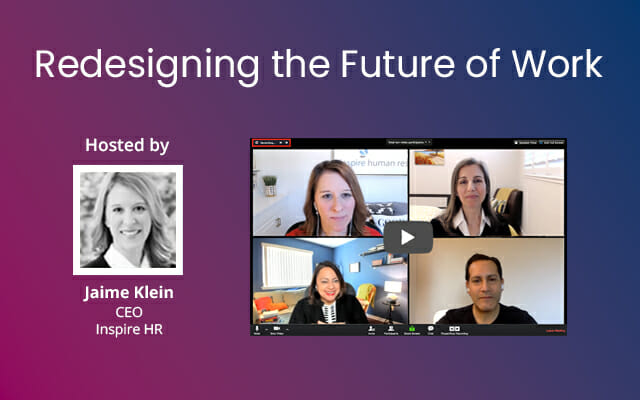
The Do’s + Don’ts of Interim Talent
MAR 04, 2021
The Do’s + Don’ts of Interim Talent
Engaging interim talent is a strategy employed by leading companies like Visa, Wells Fargo, and Hello Fresh to ensure business continuity, import industry-leading practices, boost retention, and to stay flexible in the ever-changing world of work. In this era of chronic skills shortages, companies are challenged to find people with the right skills, to do the right work, at just the right time. No matter what you call it—interim, gig, contractor, fractional—the do’s and don’ts are consistent.
According to a recent Harvard study, 80% of large corporations plan on “substantially increasing” their use of a flexible workforce in the coming years. But many leaders have questions about this flexible model.
Following last month’s discussion on maximizing the impact of interim talent, this session of Inspire HR’s Redesigning the Future of Work, will highlight the do’s and don’ts: opportunities to seize, and pitfalls to avoid, when it comes to engaging interim talent.
Top lessons from the session:
- It is crucial to have a detailed contract in place that outlines deliverables, methods of working, access to information, and other processes involved.
- Consider culture add, not just fit, to bring someone in who will leave your team stronger in multiple ways.
- Pair interim talent up with an internal person who will carry the work forward after their exit so there is a smooth transition and maximum learning opportunities.
- Check-in regularly beyond the deliverables. Foster the relationship from start to finish to ensure both sides have what they need to create the greatest impact.
{
"__typename": "ReusableSection_Acfsections_Sections_RelatedArticles",
"showPagination": true,
"articles": null,
"newsCategoryToShow": null,
"categoryToShow": null,
"fieldGroupName": "ReusableSection_Acfsections_Sections_RelatedArticles",
"numberOfPostsToShow": 8,
"postType": "live_series",
"relatedOptions": "current_category",
"subLayout": {
"__typename": "ReusableSection_Acfsections_Sections_RelatedArticles_SubLayout",
"paddingTop": "8rem",
"paddingBottom": "8rem",
"contentWidth": "normal",
"contentAlignment": "text-left",
"changePaddingOnMobile": null,
"mobilePaddingBottom": "2rem",
"mobilePaddingTop": "2rem"
},
"subHeader": {
"__typename": "ReusableSection_Acfsections_Sections_RelatedArticles_SubHeader",
"subtext": null,
"headerAlignment": "left",
"headerColor": null,
"subtitle": null,
"title": "Redesigning the Future of Work",
"headerSize": "h3"
},
"subBackground": {
"__typename": "ReusableSection_Acfsections_Sections_RelatedArticles_SubBackground",
"gradientStartPoint": null,
"gradientEndPoint": 100,
"gradientAngle": 200,
"videoLink": null,
"tabletScale": null,
"startColor": null,
"overlayOptions": null,
"overlayOpacity": 57,
"overlayColor": "#000000",
"mobileScale": null,
"imageRepeat": null,
"gradientType": null,
"endColor": null,
"desktopScale": null,
"backgroundWidth": "full",
"backgroundVerticalLocation": "center",
"backgroundType": "none",
"backgroundScale": "cover",
"backgroundHorizontalLocation": "center",
"backgroundColor": null,
"backgroundImage": null,
"mobileBackgroundImage": null
}
}